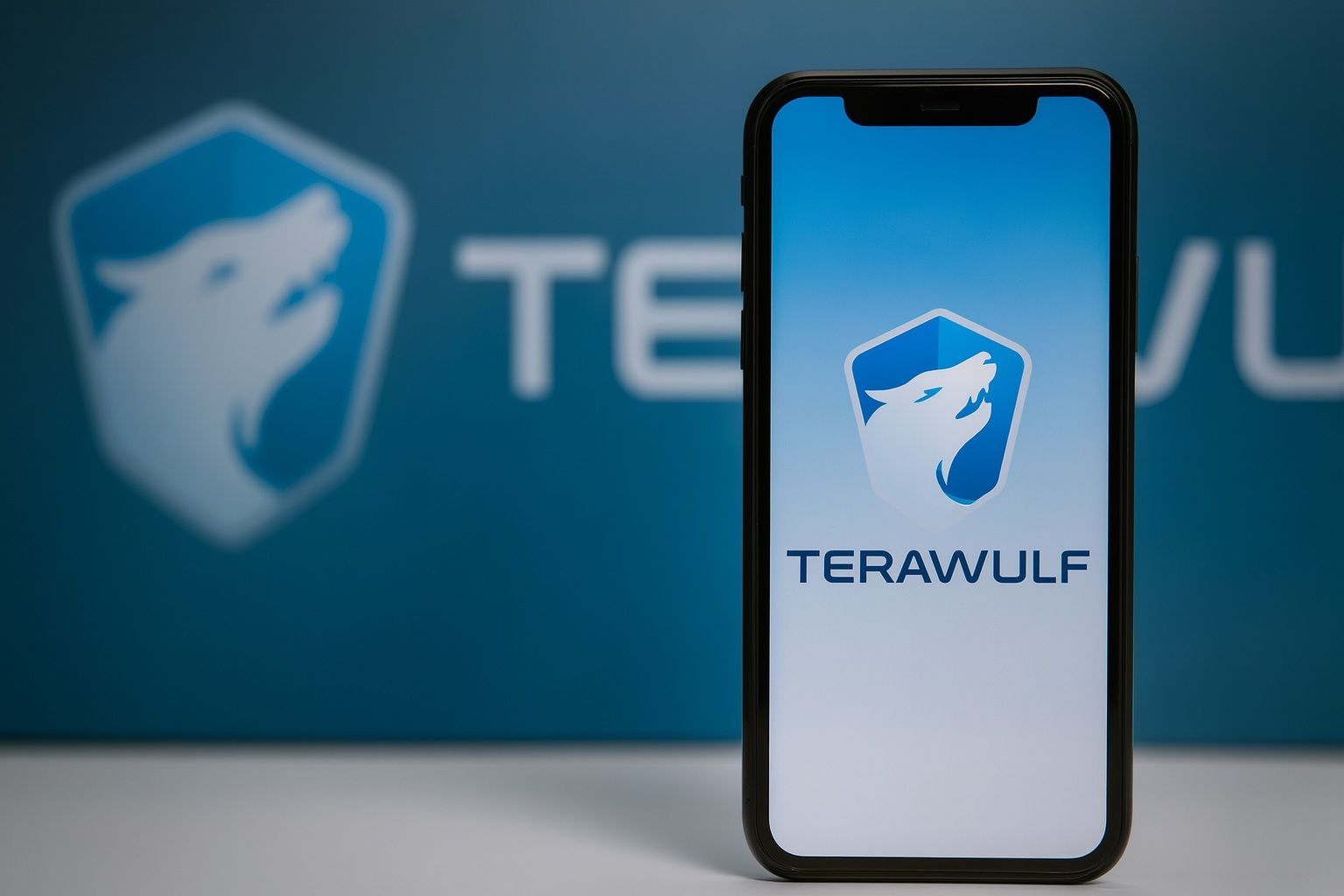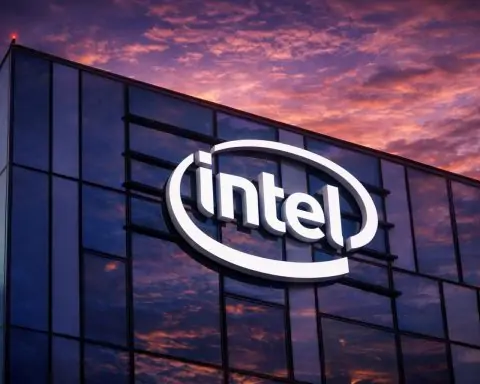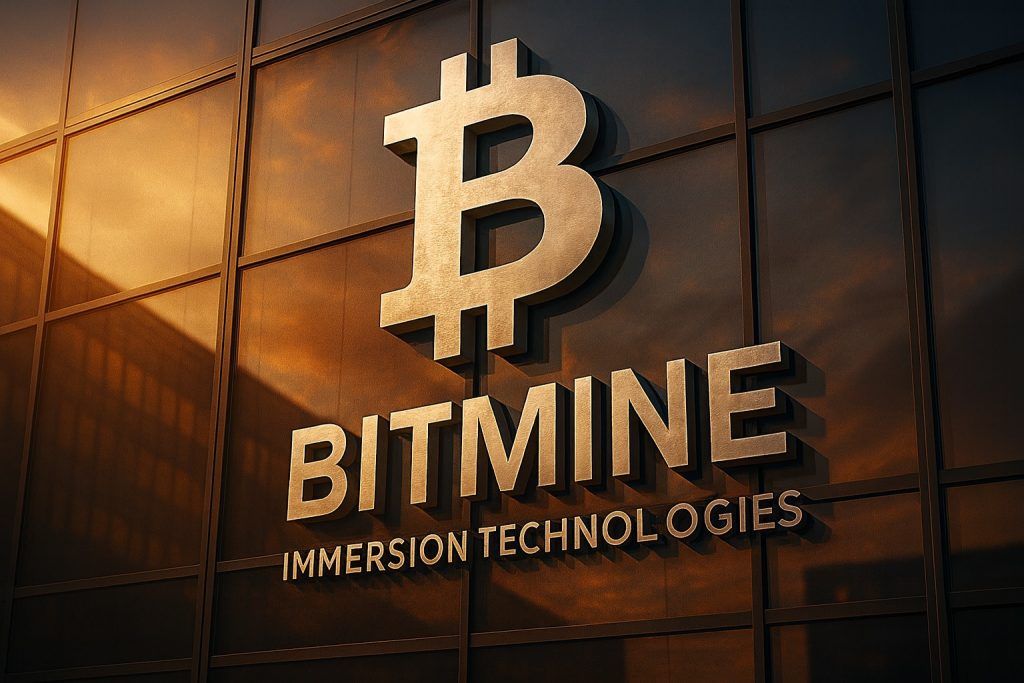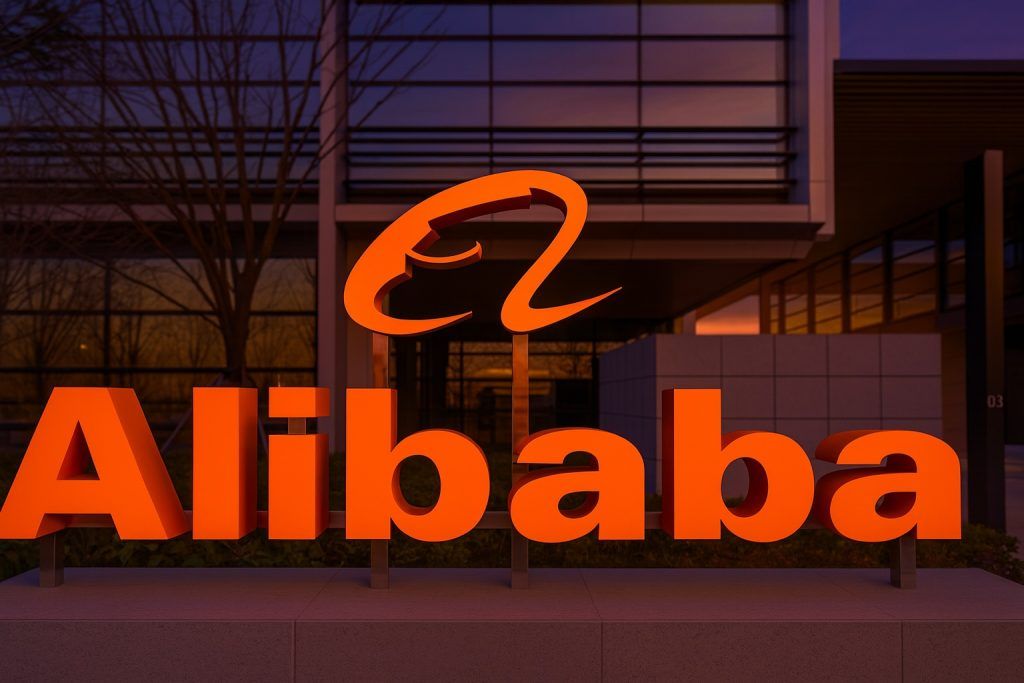- WULF stock has more than doubled in 2025 (≈+117% year-to-date) [1], closing around $13.7 on Friday [2] after touching a 52-week high of $16.19 earlier this month [3]. Trading volume spiked to ~27 million shares on Oct. 24 [4], reflecting high investor interest.
- Pivot to AI fuels the rally: TeraWulf’s move beyond Bitcoin mining into AI data centers is a game-changer. In August, it inked two 10-year hosting deals (200+ MW) worth ~$3.7 billion [5] – and tech giant Google agreed to backstop $3.2 billion of the project financing, gaining roughly a 14% stake in TeraWulf [6].
- Analysts mostly bullish: A wave of Wall Street upgrades followed. JMP Securities hiked its price target to $18 and Rosenblatt Securities to $20 [7]. Northland Capital likewise raised its target (to $16.25) and praised TeraWulf’s low 7.75% interest rate on new debt as “very attractive,” citing it as evidence of improving finances [8].
- But a new downgrade shocks bulls: On Oct. 26, research firm Wall Street Zen bucked the trend by downgrading WULF to “sell” [9] – a significant shift in sentiment – even as the stock’s consensus rating remains Moderate Buy overall [10].
- Green energy advantage: TeraWulf runs on nearly 100% clean, zero-carbon energy [11] (hydropower in NY, nuclear in PA), insulating it from environmental crackdowns on high-emission crypto mining. Regulators have targeted coal-powered Bitcoin operations, but TeraWulf’s eco-friendly approach aligns with the push for greener crypto infrastructure [12] [13].
- Bitcoin market headwinds: Crypto mining economics are tightening – Bitcoin’s price recently pulled back and mining difficulty is near record highs [14], squeezing miners’ profit margins. TeraWulf aims to offset these headwinds by hosting high-performance computing (HPC) for AI clients, diversifying its revenues beyond Bitcoin.
- Outlook – big growth, some caution: Analysts expect TeraWulf’s revenue to surge as new projects come online – one forecast sees sales roughly doubling from 2025 to 2026 [15]. Bulls argue WULF stock could climb another 50–70% from here [16], but execution risks and crypto volatility keep others cautious [17] [18].
TeraWulf, a Bitcoin miner with green energy infrastructure, is expanding into AI-focused data centers – a strategy that has attracted backing from Google in 2025 [19] [20].
TeraWulf’s High-Flying 2025 Rally
TeraWulf Inc. (NASDAQ: WULF) has been one of 2025’s standout stock market stories. The company’s share price has surged over 100% since January [21], vastly outperforming broader market indices. After a roller-coaster 2025, WULF recently traded around the mid-$13 range [22] – a level not seen in years – and briefly hit multi-year highs near $16 [23]. In fact, on October 9 the stock reached ~$13.40 intraday, its highest mark since 2021 [24], and then went on to notch a new 52-week peak of $16.19 shortly after [25].
What’s driving this explosive rally? Part of the momentum came from the broader crypto market rebound in mid-2025 – as Bitcoin prices climbed, crypto-mining stocks like TeraWulf caught a bid. But WULF has also been propelled by its own headline-making moves. In August and September, the stock catapulted ~83% in one month [26], and added another +21% the next, far outpacing Bitcoin’s gains. Traders on retail forums have taken notice: by early October, TeraWulf became one of the top trending tickers on platforms like Reddit and Stocktwits, fueled by the narrative of a miner pivoting into AI computing [27]. In short, WULF’s story hit a sweet spot of two market hypes – crypto and artificial intelligence – sending speculators flocking.
This past week showed that excitement in action. On Friday (Oct. 24), WULF closed at $13.71, jumping 6.4% in a single day [28]. Nearly 27.3 million shares changed hands that day [29] – several times the typical volume – indicating feverish trading interest. The stock is now a bit off its peak but still near the top of its range. Overall market sentiment around TeraWulf remains bullish, though the ride has been volatile, and a recent analyst downgrade introduced a note of caution heading into late October.
AI Deals and Google’s $3 Billion Endorsement
The biggest catalyst behind TeraWulf’s surge has been its bold expansion into the AI data center business. Traditionally a Bitcoin miner, TeraWulf stunned observers by announcing massive deals to repurpose its infrastructure for high-performance computing (HPC) workloads – essentially leasing out its facilities to run AI and cloud computing tasks. This pivot was highlighted in August 2025, when TeraWulf revealed two landmark agreements with a company called Fluidstack, a cloud provider for AI. The contracts will see TeraWulf host over 200 megawatts of AI computing at its flagship Lake Mariner site in New York, under 10-year agreements worth about $3.7 billion in revenue [30] (with potential extensions up to $8.7B) – a colossal sum, especially for a firm that made under $50M in quarterly revenue previously.
Even more eye-opening was Google’s involvement. As part of the deal, Google stepped in to support the project’s financing, agreeing to backstop roughly $1.8 billion of Fluidstack’s debt obligations for the initial build-out [31]. In return, Google received warrants for about 41 million TeraWulf shares, giving it an ~8% equity stake [32]. Just a week later, Fluidstack decided to expand the partnership – adding another 160 MW in a new data center building – and Google upped its backing with an additional $1.4 billion commitment, raising its total support to ~$3.2B and boosting its stake in TeraWulf to around 14% [33]. This essentially means a tech titan has vetted and financially endorsed TeraWulf’s infrastructure. The companies plan to bring these new liquid-cooled AI data halls online by the second half of 2026, which would make Lake Mariner “one of the largest HPC campuses in the U.S.” according to TeraWulf [34].
TeraWulf didn’t stop there. Also in August, it secured an 80-year lease on a former coal plant site in Cayuga, NY – a move to unlock up to 400 MW of additional capacity for future data centers [35]. The Cayuga project offers 138 MW of ready power by 2026, at very low cost (~5¢/kWh) and fed by an already 90% clean energy upstate NY grid [36]. In effect, TeraWulf is amassing huge reserves of cheap, green power for both mining and AI computing uses. The Cayuga deal even aligned with insiders’ interests: the site’s owner (an affiliate of TeraWulf’s CEO) accepted payment largely in WULF stock – showing confidence that the stock could rise further [37].
To bankroll this rapid expansion, TeraWulf raised significant capital over the summer. In mid-August it issued 1% convertible bonds due 2031, initially $850M worth (later upsized to $1.0 billion) [38]. And rumors swirled that even more financing was coming. By late September, reports (via CoinDesk) hinted TeraWulf was planning a ~$3B debt raise with Morgan Stanley’s help [39]. That rumor became reality in October: the company’s subsidiary WULF Compute priced a record $3.2 billion in senior secured notes at 7.75% interest, due 2030 [40]. This was the single largest debt issuance by a Bitcoin miner ever [41] – a bold bet that TeraWulf’s new AI-centric infrastructure will pay off. Unlike the risky loans miners took in 2021 (backed by bitcoin machines), these notes are backed by data center assets, and even include a Google guarantee in the form of Google pledging warrants and support until the project is completed [42]. Such terms signal that institutional lenders (and Google itself) are confident in TeraWulf’s vision.
“A defining moment for TeraWulf… delivering the next generation of AI infrastructure, powered by low-cost, predominantly zero-carbon energy.” – CEO Paul Prager, on the Fluidstack/Google deals [43]
Company leadership has been understandably upbeat. CEO Paul Prager called the Google-backed partnerships “a defining moment” for the company, emphasizing that TeraWulf will be delivering cutting-edge AI computing on a green energy platter [44]. Chief Technology Officer Nazar Khan added that Fluidstack’s quick decision to expand “speaks volumes” about the quality and scalability of TeraWulf’s Lake Mariner campus [45]. These deals essentially transform TeraWulf into a hybrid: part Bitcoin miner, part hyperscale AI data center operator. That unique positioning has greatly boosted the company’s credibility – and stock – in recent months.
Recent Stock Moves and Market Sentiment
All these developments set the stage for TeraWulf’s stock to soar, but they also raised expectations. By mid-October, with WULF near all-time highs, some investors began debating whether the stock had run too far, too fast. Toward the end of the month, trading remained brisk – the share price seesawed between roughly $12.80 and $14.17 in the week before Oct. 26 [46] – showing both optimism and profit-taking at play.
On Friday, Oct. 24, WULF made a strong move upward, gaining over 6% to finish around $13.71 [47]. That rally came on unusually heavy volume (~27 million shares) [48], suggesting possibly a news-driven bump or large buyers stepping in. It’s notable that Bitcoin prices also ticked up slightly that day, which often lifts mining stocks. And with the weekend approaching, some traders may have been positioning ahead of expected news or simply riding positive momentum.
However, over that same weekend came a dose of cold water from Wall Street. On Sunday, Oct. 26, an analyst update from research site Wall Street Zen cut against the prevailing bullish sentiment. The firm downgraded TeraWulf’s stock from “hold” to “sell” [49], indicating it believes the stock is overvalued at current levels. This surprise downgrade marked a “significant shift in sentiment” [50], given that no major analysts had a sell rating on WULF previously. While the report’s full rationale wasn’t public, a few factors likely played in: TeraWulf’s recent financial results showed a small earnings miss – the company lost $0.05 per share last quarter, a tad more than analysts expected (consensus was –$0.04) [51]. And despite strong revenue growth (+33.9% YoY last quarter) [52], TeraWulf is still losing money as it pours capital into expansion. Combine that with a 100%+ stock run-up, and it’s easy to see why a cautious analyst might yell “slow down.”
The immediate reaction to the sell call remains to be seen (markets will re-open Monday). But it injects a note of skepticism into what had been an overwhelmingly positive narrative. Importantly, this is just one firm’s view – and a relatively small research outfit at that. Overall market sentiment is still bullish on WULF, as detailed below, but the downgrade is a reminder that the stock’s valuation and execution risks can’t be ignored. Even TeraWulf’s management would likely agree the company has a lot to prove in coming quarters to justify the recent stock price exuberance.
Analysts’ Outlook: Bulls vs. Bears on WULF
Zooming out, how do experts see TeraWulf’s prospects? By and large, Wall Street analysts remain optimistic about WULF – though opinions are not monolithic. According to data compiled by MarketBeat around late October, out of 14 analysts covering the stock, 12 rate it a Buy or Strong Buy, 1 has it at Hold, and 1 at Sell [53]. In other words, the consensus leans strongly positive (a “Moderate Buy”), and the new Sell rating is an outlier.
Price targets, however, vary quite widely. Many analysts had been lifting their targets as TeraWulf’s news flow improved. For instance, JMP Securities recently bumped its 12-month target from $13 up to $18 while reiterating an “Outperform” rating [54]. Rosenblatt Securities raised its target from $14.50 to $20.00 and maintained a Buy rating in mid-October [55]. And just on Oct. 17, Northland Capital Markets upgraded its target to $16.25 (from $15) and maintained an Outperform, calling the 7.75% pricing on TeraWulf’s big bond deal “very attractive” – evidence, in Northland’s view, that the company’s financial position is strengthening [56]. These bullish analysts argue that WULF’s transformation into a dual crypto-and-AI play merits a higher stock valuation than its past as a pure miner.
“[The debt deal’s] pricing is very attractive,” providing evidence of improving conditions for the company – Northland Capital, raising WULF’s target to $16.25 [57]
Some experts are extremely bullish. Notably, Roth Capital’s analyst Darren Aftahi sees major upside: he upgraded TeraWulf’s target from $14 to $21.50 (implying over 60% gain from recent prices) [58], citing the company’s >420 MW of signed AI leases and strong demand for its HPC capacity as justification [59]. Another brokerage, Clear Street, raised its target from $12 to $16 and commended TeraWulf’s management execution and momentum in building the AI platform [60]. Even large firms have taken note – Cantor Fitzgerald upped its target to $14 (from $11) in late August after the Google deal news [61]. These higher-end targets in the high teens to low $20s reflect a belief that WULF’s growth prospects (and perhaps the halo of having Google as a backer) warrant a premium.
On the other hand, a few analysts urge caution. The most bearish view comes from Compass Point, which initiated coverage in September with a mere $6.50 price target [62] – essentially predicting the stock could fall by half. That conservative call likely hinges on execution risks: if some of TeraWulf’s big deals or data center projects falter or face delays, the stock’s current price would be hard to justify. Indeed, TS² (TechStock Squared) notes that at recent levels WULF was trading around 30× its forward sales – a rich valuation that assumes a lot of future success [63] [64]. The median analyst target as of early October was about $13.00 [65] [66], roughly where the stock sits now, suggesting many on Wall Street think WULF is fairly valued after its run-up. To move higher, the company will need to execute flawlessly (or Bitcoin prices will need to surge more, or both).
In short, analysts’ forecasts span a wide range – from about $6 on the low end to $20+ on the high end [67] – reflecting the uncertainty around a fast-evolving business. The consensus rating being effectively “Buy” hides the split: most see a bright future and significant upside, but a minority voices that downside risks remain. Key factors in every forecast include: the pace of AI hosting revenue ramp-up, Bitcoin market trends, and TeraWulf’s ability to finance growth without overextending. If Google’s support and the new contracts all materialize as planned, bulls argue WULF could justify those higher targets in the mid-teens or beyond [68]. But any stumble could vindicate the skeptics who say the stock’s high-flying valuation may be priced for perfection.
Bitcoin Mining Climate and TeraWulf’s Edge
TeraWulf operates at the crossroads of two volatile industries – cryptocurrency mining and high-tech data centers – so understanding the broader environment is important. On the crypto side, the company is influenced by the ups and downs of Bitcoin. Earlier this year, Bitcoin’s price rallied to its highest levels in over a year, which greatly lifted mining companies’ fortunes. However, recent weeks have seen a Bitcoin price slide from its highs, and at the same time the Bitcoin network’s mining difficulty (which determines how hard it is to earn bitcoins) keeps climbing to near-record levels [69]. Higher difficulty means miners expend more effort (and electricity) for fewer BTC rewards. This one-two punch – weaker crypto prices and tougher mining conditions – is squeezing profit margins for miners across the board [70].
Additionally, back in April 2024, Bitcoin underwent its scheduled “halving,” a fundamental event that cut block rewards in half overnight. For miners like TeraWulf, that meant they suddenly earned 50% fewer bitcoins for the same work. Indeed, TeraWulf’s own Bitcoin production dropped significantly – in Q2 2025 it mined 485 BTC, down from 699 BTC in Q2 a year prior [71] – due to that halving impact. The company noted that even as they expanded their mining fleet, the halving reduced output until rising BTC prices can compensate [72]. These factors highlight why pure-play Bitcoin mining can be a tough, unpredictable business.
TeraWulf’s strategy to cope with these headwinds has two prongs: operate more efficiently at mining than peers, and diversify beyond mining altogether. On the efficiency side, TeraWulf benefits from some of the lowest-cost power in the industry. Its facilities tap into cheap, often fixed-rate electricity – around $0.05 per kWh in upstate New York [73] – sourced from zero-carbon producers. The company has built a substantial hashrate (mining capacity of about 12.8 EH/s as of mid-2025) and claims its cost to mine 1 Bitcoin is well below the current BTC price, giving it a cushion even if Bitcoin’s price retreats [74] [75]. In essence, TeraWulf can remain profitable mining when higher-cost rivals might struggle or shut off machines.
More importantly, TeraWulf is not betting its future solely on Bitcoin. By pivoting into HPC and AI hosting services, it’s securing an alternative revenue stream that isn’t correlated with crypto market swings. This makes TeraWulf more of a diversified digital infrastructure company rather than just a miner. It’s a trend catching on across the sector: for example, competitor Bitfarms followed TeraWulf’s lead with an upsized $588 million convertible note issuance to fund its own data-center ambitions, and that stock (BITF) is up ~196% this year as investors applaud its vertical integration with a power plant [76]. Another miner, CleanSpark (CLSK), recently hired a new executive to lead an AI data centers division [77], signaling its intent to blend Bitcoin mining with other compute services too.
TeraWulf appears to be at the forefront of this crypto-meets-AI convergence. By leveraging its green energy and excess capacity, the company can host enterprise customers running AI workloads (which require immense electricity and cooling, similar to mining). This dual model could make revenue more resilient. When Bitcoin mining margins are thin, income from AI clients could provide a boost – and vice versa, if the AI boom ever cools, Bitcoin could still be a cash cow in a crypto bull market. It’s akin to having two engines on the plane: if one sputters, the other can still keep you aloft.
That said, success is not guaranteed. The entire Bitcoin mining industry still hinges on crypto prices remaining high enough. And entering the data center business brings new competitors (like established cloud providers) and execution challenges (building and maintaining high-tech facilities on tight timelines). But with marquee partners (Google, Fluidstack) and a clear cost advantage, TeraWulf has a credible shot at establishing itself in this new niche. As an observer in the mining industry put it, energy availability is becoming king – one even quipped that some data center operators are buying jet engine turbines to generate power quickly [78]. In that landscape, TeraWulf’s access to ample grid power and renewables could be a make-or-break advantage.
Green Energy and Regulatory Landscape
One aspect where TeraWulf clearly differentiates itself is its commitment to green energy. The company proudly claims to run its mining and computing operations on a nearly 100% renewable or carbon-free power mix [79]. At its Lake Mariner facility in New York, electricity comes primarily from the state’s hydroelectric grid (part of why power is so cheap there). At its Nautilus Cryptomine in Pennsylvania, TeraWulf partners with a nuclear-powered energy source. And its upcoming Cayuga site plans to integrate not only existing grid power (which is ~90% renewable in that region [80]) but also new on-site solar farms (67 MW planned) and an 800 MWh battery system for storage [81].
This green profile is more than just a branding effort – it could prove vital in navigating regulatory challenges. Around the world, regulators have grown wary of Bitcoin mining’s environmental impact. Notably, in New York (a key state for TeraWulf), a law was passed imposing a moratorium on new crypto-mining permits for fossil-fuel powered plants [82]. Because TeraWulf’s operations draw on zero-carbon sources, it was essentially exempt and can continue expanding without running afoul of that law. In contrast, miners using coal or natural gas power in some regions have faced community and legislative pushback. Similarly, federal proposals in the U.S. have floated extra taxes on electricity used for crypto mining to account for carbon emissions. If any such rules come to pass, TeraWulf’s carbon-light footprint means it would be far less affected than miners relying on fossil fuels.
The company also pitches its eco-friendliness to investors who consider ESG (Environmental, Social, Governance) factors. TeraWulf likes to describe itself as a “predominantly zero-carbon” infrastructure operator [83], which resonates with certain institutional investors and funds that have mandates to invest in sustainable businesses. By emphasizing things like liquid cooling (which improves energy efficiency for computing) and using sites like former coal plants for new green purposes, TeraWulf frames its growth as part of a broader transition to cleaner industry [84].
Of course, it’s not purely altruistic – using cheap renewable energy simply makes economic sense for 24/7, power-hungry operations like Bitcoin mining. But the environmental angle provides a nice public relations boost and might insulate TeraWulf from future legal restrictions. For example, if governments impose carbon taxes or energy usage limits on crypto miners, those running on renewables could get a pass or at least have much lower costs. TeraWulf appears to be positioning itself as the model of a “green” Bitcoin miner, which could pay dividends both in goodwill and in avoiding compliance headaches.
The Road Ahead: Why WULF’s Next Moves Matter
As October 2025 closes, TeraWulf’s journey is entering a crucial phase. The company has made big promises – now investors will be watching closely to see if it delivers. In the short term, a key catalyst will be TeraWulf’s third-quarter 2025 earnings report, expected in late October or early November [85]. This will be the first report that could show initial revenue from the new AI hosting contracts. Management has hinted that Q3 marks a “key inflection point” as those high-margin HPC revenues begin to ramp up [86]. If TeraWulf can demonstrate meaningful sales from its “WULF Den” data center cluster (which reportedly went live in July) [87], it would validate the bullish thesis that diversifying into AI is starting to pay off. Positive surprises on that front could send the stock higher, while any disappointment (or delays in recognizing revenue) might spook the market.
Beyond earnings, execution on expansion projects will be a constant focus. The company needs to construct and commission large-scale facilities – like the new CB-5 liquid-cooled building at Lake Mariner and the first 138 MW phase at Cayuga – on time and on budget to meet its 2026 commitments [88]. It also must manage a significantly larger balance sheet now: after the $1B convertible raise and the $3.2B notes, TeraWulf’s debt levels have swelled. While much of that debt is long-term and low-interest (the convertibles at 1%, the notes at 7.75% with Google’s support) [89] [90], it’s still leverage that will eventually need to be repaid or refinanced. The stakes are high – but so is the confidence shown by big players. The fact that TeraWulf secured the largest funding deal in Bitcoin mining history [91], and at a reasonable rate, suggests major lenders believe in its vision. As one industry publication noted, institutional investors who once shunned the volatile mining sector are now willing to bankroll projects backed by real assets and AI potential [92] [93].
Market watchers predict strong growth ahead for TeraWulf if things go right. Wall Street projections have the company’s revenue roughly doubling in 2026 versus 2025 [94], and continuing to climb steeply into 2027. By 2027, some analysts think TeraWulf could be an $800+ million per year business, a quantum leap from its ~$100 million run-rate today. That growth, of course, is not guaranteed – it assumes the AI hosting contracts are fully realized and Bitcoin stays at healthy price levels. It’s also dependent on TeraWulf maintaining its competitive edge in costs and technology.
For investors, TeraWulf represents both an exciting opportunity and a case study in managing risk. Why does it matter? If TeraWulf succeeds, it could mark a new chapter where crypto miners evolve into broader digital infrastructure companies – blending the booming demand for AI computation with the scale and energy prowess developed in Bitcoin mining. It’s a convergence of two major tech trends: the continued adoption of cryptocurrency and the artificial intelligence revolution. TeraWulf is attempting to straddle both. Its stock is thus something of a bellwether for how public markets value this hybrid model.
In the coming months, keep an eye on Bitcoin price trends (a surge or crash will undoubtedly move WULF), on AI/data center industry developments, and on TeraWulf’s own milestones – like progress updates on construction and any new partnerships or customer wins. The company has hinted at having the capacity to expand to 500–750 MW at Lake Mariner alone with the proper approvals [95], so additional deals could be on the horizon if demand stays hot.
For now, TeraWulf has the market’s attention. The stock’s trading frenzy and lofty valuation show that investors are buying into the narrative of a green-powered, Google-backed crypto/AI pioneer. The recent analyst Sell call is a reminder to separate hype from reality, but it’s not unusual for a high-growth story to have naysayers. In the short term, volatility is likely – WULF could swing sharply on any news. Longer term, if TeraWulf delivers on even a portion of its plans, it could firmly establish itself as an infrastructure player in two of the most dynamic sectors of this decade. In other words, the next chapters for TeraWulf will answer a question that matters to more than just WULF shareholders: Can the bridge between Bitcoin and AI be the next big money-maker? Investors and analysts will be watching closely to find out.
Sources: Recent financial news and analysis on TeraWulf [96] [97]; company press releases and investor materials [98] [99]; industry reports on Bitcoin mining and AI data centers [100] [101]; TeraWulf’s Q2 2025 earnings summary [102]; and market data from October 2025 [103] [104]. All information is current as of Oct. 26, 2025.
References
1. ts2.tech, 2. finance.yahoo.com, 3. www.marketbeat.com, 4. www.nasdaq.com, 5. ts2.tech, 6. ts2.tech, 7. www.marketbeat.com, 8. www.insidermonkey.com, 9. www.marketbeat.com, 10. www.marketbeat.com, 11. ts2.tech, 12. ts2.tech, 13. ts2.tech, 14. blockspace.media, 15. stockanalysis.com, 16. ts2.tech, 17. ts2.tech, 18. ts2.tech, 19. ts2.tech, 20. ts2.tech, 21. ts2.tech, 22. ts2.tech, 23. www.marketbeat.com, 24. ts2.tech, 25. www.marketbeat.com, 26. ts2.tech, 27. ts2.tech, 28. finance.yahoo.com, 29. www.nasdaq.com, 30. ts2.tech, 31. ts2.tech, 32. ts2.tech, 33. ts2.tech, 34. ts2.tech, 35. ts2.tech, 36. ts2.tech, 37. ts2.tech, 38. ts2.tech, 39. ts2.tech, 40. blockspace.media, 41. blockspace.media, 42. investors.terawulf.com, 43. ts2.tech, 44. ts2.tech, 45. ts2.tech, 46. investors.terawulf.com, 47. finance.yahoo.com, 48. www.nasdaq.com, 49. www.marketbeat.com, 50. www.marketbeat.com, 51. www.marketbeat.com, 52. www.marketbeat.com, 53. www.marketbeat.com, 54. www.marketbeat.com, 55. www.marketbeat.com, 56. www.insidermonkey.com, 57. www.insidermonkey.com, 58. ts2.tech, 59. ts2.tech, 60. ts2.tech, 61. ts2.tech, 62. ts2.tech, 63. ts2.tech, 64. ts2.tech, 65. ts2.tech, 66. ts2.tech, 67. ts2.tech, 68. ts2.tech, 69. blockspace.media, 70. blockspace.media, 71. ts2.tech, 72. ts2.tech, 73. ts2.tech, 74. ts2.tech, 75. ts2.tech, 76. blockspace.media, 77. blockspace.media, 78. blockspace.media, 79. ts2.tech, 80. ts2.tech, 81. ts2.tech, 82. ts2.tech, 83. ts2.tech, 84. ts2.tech, 85. ts2.tech, 86. ts2.tech, 87. ts2.tech, 88. ts2.tech, 89. www.insidermonkey.com, 90. investors.terawulf.com, 91. blockspace.media, 92. blockspace.media, 93. blockspace.media, 94. www.tradingnews.com, 95. ts2.tech, 96. www.marketbeat.com, 97. www.insidermonkey.com, 98. investors.terawulf.com, 99. ts2.tech, 100. blockspace.media, 101. ts2.tech, 102. ts2.tech, 103. finance.yahoo.com, 104. www.marketbeat.com








